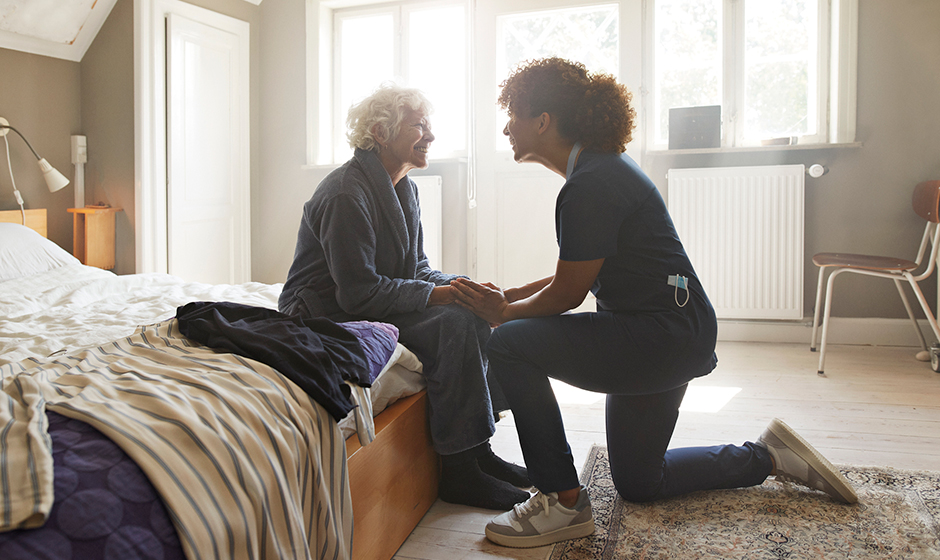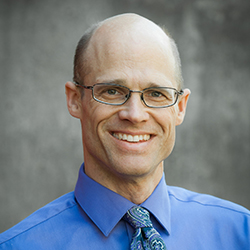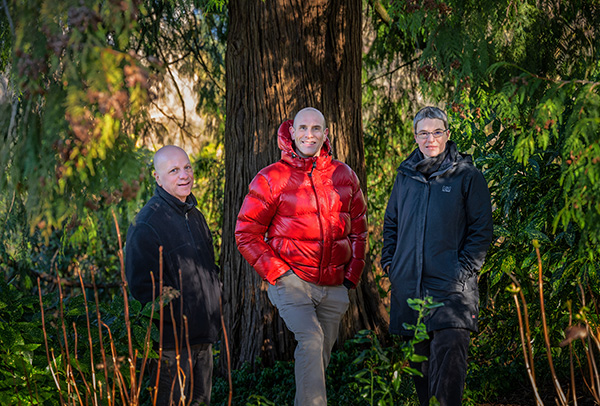Putting accessibility at the centre of climate action
B.C. researchers are working to address the challenges people with disabilities face in our changing climate.

For the 22 per cent of Canadians living with a disability, climate change amplifies the challenges many of them encounter on a daily basis, while introducing an array of new ones.
“People with disabilities are among the most vulnerable to climate change,” says Dr. Ben Mortenson, professor and department head of occupational science and occupational therapy at UBC. “They’re far more likely to experience poverty, unstable housing, and a multitude of physical, social, economic and environmental barriers. This puts them on the front lines of the climate crisis, but for a long time, their needs have been overlooked.”

The impact of climate change on people with disabilities is wide-ranging. Mobility challenges, for instance, can limit their ability to evacuate during a wildfire or flood, or access cooling centres during a heat wave. Sensory impairments, such as vision and hearing loss, can hinder their access to emergency alert information. And pre-existing health conditions, such as diabetes and respiratory diseases, can make people with disabilities even more vulnerable to the effects of extreme heat and poor air — exacerbated by the fact that they are less likely to have air conditioning in their homes.
Fortunately, Dr. Mortenson says, students and graduates from UBC’s occupational therapy program are uniquely positioned to help.
UBC-trained occupational therapists are working with people in their homes and in their communities across British Columbia to help them achieve greater independence and to participate in the daily activities that are meaningful to them. This, in turn, can make them more resilient to the effects of climate change.
“Adaptation is at the core of what we do. The needs of people with disabilities are fluid and ever-evolving, so as our climate changes, occupational therapists can help people adapt and modify their lifestyles,” says Dr. Mortenson.
These adaptation measures could include working with clients to help them stay safe and active during extreme weather events, and identifying home modifications that promote climate resiliency and good health, such as heat-mitigating techniques and equipment. It means working with clients to plan for emergency scenarios, and helping people who are displaced from their communities or experience disruption get back to their regular routine.
“People with disabilities are far more likely to experience poverty, unstable housing, and a multitude of social, economic and environmental barriers. This puts them on the front lines of the climate crisis.”
– Dr. Ben Mortenson
To equip the next generation of occupational therapists with the education and skills to help clients navigate climate change, Dr. Mortenson has initiated a new project that integrates climate change and sustainability practice into UBC’s Master of Occupational Therapy program.
“By embedding sustainability and climate change content throughout the program, we want to empower our students to become agents of change for a greener world, and in promoting climate resiliency with their clients,” he says.
Dr. Mortenson is also leading the charge to make the occupational therapy profession more environmentally friendly through research.
In a recently presented study, Dr. Mortenson and his team examined the sustainability of home modification equipment that occupational therapists recommend for aging adults and people with disabilities. This includes grab bars, bathroom equipment, motion-activated lighting, ramps and lifts — important infrastructure that helps people perform daily tasks and age in place for longer, while reducing their need for caregiving services.
The study found that while many occupational therapists want to integrate environmental sustainability into their practice, current health systems don’t prioritize the reuse and recycling of old equipment.
“People’s needs change over time, and so do the home modifications they require. But too often that old equipment ends up in the landfill prematurely,” Dr. Mortenson says.
Dr. Mortenson hopes to leverage the study’s findings to establish programs and processes that will allow used equipment to re-enter the healthcare system. Better yet, he says funding for home modifications should prioritize future-proof solutions that adapt as people’s needs change — saving money for both the healthcare system and clients in the long-term, while having a smaller environmental impact.
“People’s needs change over time, and so do the home modifications they require. But too often that old equipment ends up in the landfill prematurely.”
Those same funding systems also need to become more equitable and responsive to support the people who need it most.
“A lot of funding programs are geared towards homeowners, not people. This means that many people with a disability who rent must rely on landlords to make changes,” says Dr. Mortenson. “We need to look at how we can get heat-mitigating equipment, like air conditioning, to people with disabilities and seniors who are most impacted by extreme weather events like B.C.’s 2021 heat dome.”
For Dr. Mortenson, it comes back to the urgent need to elevate the voices of people with disabilities and highlight the many challenges they face in the context of climate change.
“People with disabilities must have a seat at the table in climate discussions so they can articulate their needs, fully participate in climate solutions, and secure climate justice for themselves.”
Never miss an issue of Pathways
Pathways — the UBC Faculty of Medicine’s digital magazine — features stories about cutting-edge health education, breakthrough research, and biomedical innovations that are making a difference in British Columbia and around the world. Discover the impact of our people and programs.





